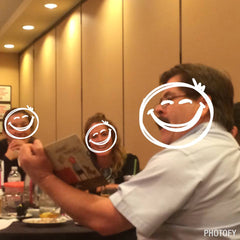All About the Libros: Developing Equitable Spanish Book Collections

Available: In-person, Online with Virtual Coaching
Deliverables: Data on current resources, priority alignment assessment, action plan
Collection development is customized to meet the needs and uniqueness of a school district. Services will also be customized to each district; therefore, prices may vary. The following is a summary of the recommended steps to evaluate and develop district Spanish book collections.
Step 1: Gather Data and Evaluate the Collections
Data will be gather by identifying the spaces (locations) and uses for books. Book collections are normally found in classrooms, libraries, and book rooms or literacy resource centers. A collection is generally categorized by location, genre (fiction or non-fiction), and translated or original text.
Step 2: Analyze Data, Align with Priorities, and Create a Plan
Once the data is gathered and compiled into the Data and Findings Report, the next step is to analyze the data through a dialogue. Dialogue means asking questions about the data, sharing observations about the data, and identifying patterns in the data. The following step is: to identify the priorities of the district, program, and/or school; to ensure the book collections align; and to identify any discrepancies between the data and the priorities. Finally, a recommendation and timeline will be presented to accomplish the tasks.

Step 3: Spanish Book Acquisition & Plan Implementation
This final step of the process supports the recommendations arrived at from the first two steps in the Book Collection Evaluation and Development process. Books del Sur will assist you in finding Spanish books and professional services that meet the recommendations made in Step 2.
Professional Development Sessions Facilitation
 All sessions are facilitated by Heather Robertson-Devine. Robertson-Devine is the founder and owner of Books del Sur. She leads Books del Sur’s mission to publish and curate authentic Spanish literature from Latin America. She is driven by her 16 years of dual language teaching and coaching as a public-school educator in Wisconsin and California. She has developed Spanish book collections for organizations and school districts for the past six years. She has been trained in Adaptive Schools, Reflective Coaching, and the Teaching for Biliteracy, Bilingual Unit Framework. She was WIDA’s Featured Educator for August 2015. She holds a Masters of Educational Leadership and Policy from the California State University of Northridge and an undergraduate degree from the University of Wisconsin-Madison in International Relations and Latin American & Iberian Studies. To read more about her experiences see her chapter, “The Activist Teacher” in Sonia Nieto’s book Why We Teach Now. References are available upon request.
All sessions are facilitated by Heather Robertson-Devine. Robertson-Devine is the founder and owner of Books del Sur. She leads Books del Sur’s mission to publish and curate authentic Spanish literature from Latin America. She is driven by her 16 years of dual language teaching and coaching as a public-school educator in Wisconsin and California. She has developed Spanish book collections for organizations and school districts for the past six years. She has been trained in Adaptive Schools, Reflective Coaching, and the Teaching for Biliteracy, Bilingual Unit Framework. She was WIDA’s Featured Educator for August 2015. She holds a Masters of Educational Leadership and Policy from the California State University of Northridge and an undergraduate degree from the University of Wisconsin-Madison in International Relations and Latin American & Iberian Studies. To read more about her experiences see her chapter, “The Activist Teacher” in Sonia Nieto’s book Why We Teach Now. References are available upon request.

